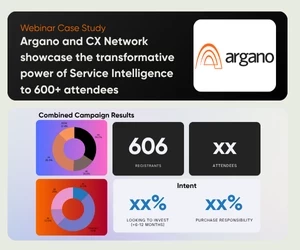Investing in Customer Relationships Pays Dividends
Learn why customer relationship measurement isn’t enough and why customer relationship health management is the new way to create impactful experiences
Add bookmark
This article was originally published on qualtrics.com.
While customer relationships are integral to businesses, how these relationships are managed is still a cause of friction for many brands. Many brands monitor the interactions and the experience a customer has, however, going one step further to actively manage these relationships is a challenge many companies fail to address. To improve loyalty, businesses should move from measurement to management.
What is customer relationship measurement?
A customer relationship is defined as the sum of all interactions and experiences that a customer has with a brand. Customer relationship measurement is simply translating customer relationships into metrics, such as Net Promoter Score (NPS), customer retention cost, Customer Effort Scores (CES), and more.
Though useful, brands often fall short of their goals by only focusing on the measurement results of their customer relationships. Using a formulaic approach to gathering feedback and scoring makes it near impossible to keep up with changing customer expectations. Customer feedback often gets stuck at just measuring the experience, and if it feeds through to the action, that action is usually focused on fighting individual fires and not driving systemic improvement. The result? Stagnant customer experiences that do not attract new customers, and open the door for competitors.
Common pitfalls of a customer relationship measurement program include:
Following a rigid cadence and structure
Most relationship measurement programs follow a set structure and distribute identical surveys to all customers on an annual or bi-annual basis. This periodic cadence limits the strategic value of the survey as it only surfaces insights about poor experiences after it is too late to take meaningful action. Businesses should be primed and ready to take action on issues before it is too late, but with this approach, this is impossible.
Obsessing about scores
While relationship metrics – such as NPS, satisfaction, or likelihood to return – are undeniably useful and important for tracking and improving customer experiences, existing measurement programs tend to treat these metrics as the ultimate goal rather than what they actually are, which is a tool that helps organizations take meaningful, targeted action and track the impact of those actions.
Lacking meaningful context
While topline metrics like NPS and OSAT are simple and easy to understand, they are narrowly focused on the company’s own performance, assessed by its current customers. Relationships are influenced in other ways, whether that be by competitors or whether a brand has lived up to its promise.
To resolve this, instead of customer relationship measurement, we propose focusing on customer relationship health management.
So with that in mind, the real question is...
What is customer relationship health management?
Relationship health management is the monitoring of experiences customers have with your brand, with a focus on taking targeted actions to improve them. Every experience matters – and knowing how to improve them matters even more.
Successful relationship health management encompasses metrics such as NPS to understand your customers’ views on their interactions with your company, and supplements these traditional metrics with additional indicators of health including competitive performance, brand strength and loyalty drivers.
But your work is not done once you see scores in a dashboard. Taking action after understanding how your customers perceive you is where relationship measurement becomes management. Your tools should provide you with the means to take influential action on problems and further improve the things that you are doing well.
Relationship management is not just a one-time event; it is a constant process of improving, re-measuring and improving again to ensure your customer relationships remain healthy as needs evolve.
The benefits of customer relationship health management:
Loyal customers are more likely to forgive you for poor experiences, as long as you manage them, communicate well and recover the relationship. It is more expensive to acquire new customers than to retain the ones you have. Relationship programs improve retention, loyalty and lifetime value. Not only will they stay longer, but they will recommend you to others if they are happy too.
According to Qualtrics XM Institute, customers are:
- 4.2 times more likely to trust an organization after a positive customer experience
- 5.1 times more likely to recommend an organization after satisfying customer experience
- 3.5 times more likely to purchase more from an organization after a positive customer experience
Why now is the time to update your relationship health management program
According to research from Qualtrics XM Institute, just one bad experience can lead to a 9.5 per cent decrease in sales across all industry types. Every interaction matters.
Creating a relationship health management program – which turns relationship measurement into active relationship management – will significantly improve loyalty, retention and increase customer lifetime value.
Taking this step cannot come too soon, as every customer interaction can be the difference between a good experience or a poor one, and the consequences that come from that.
Our insight-led ebook details why you should craft a relationship health management program that is:
- Dynamic and always-on
- Laden with comparative insights
- Linked to business results
- Action-oriented
With an effective relationship health management program in place, you can build trust with your current customer base, transform customers into brand advocates and increase your customer lifetime value.



















